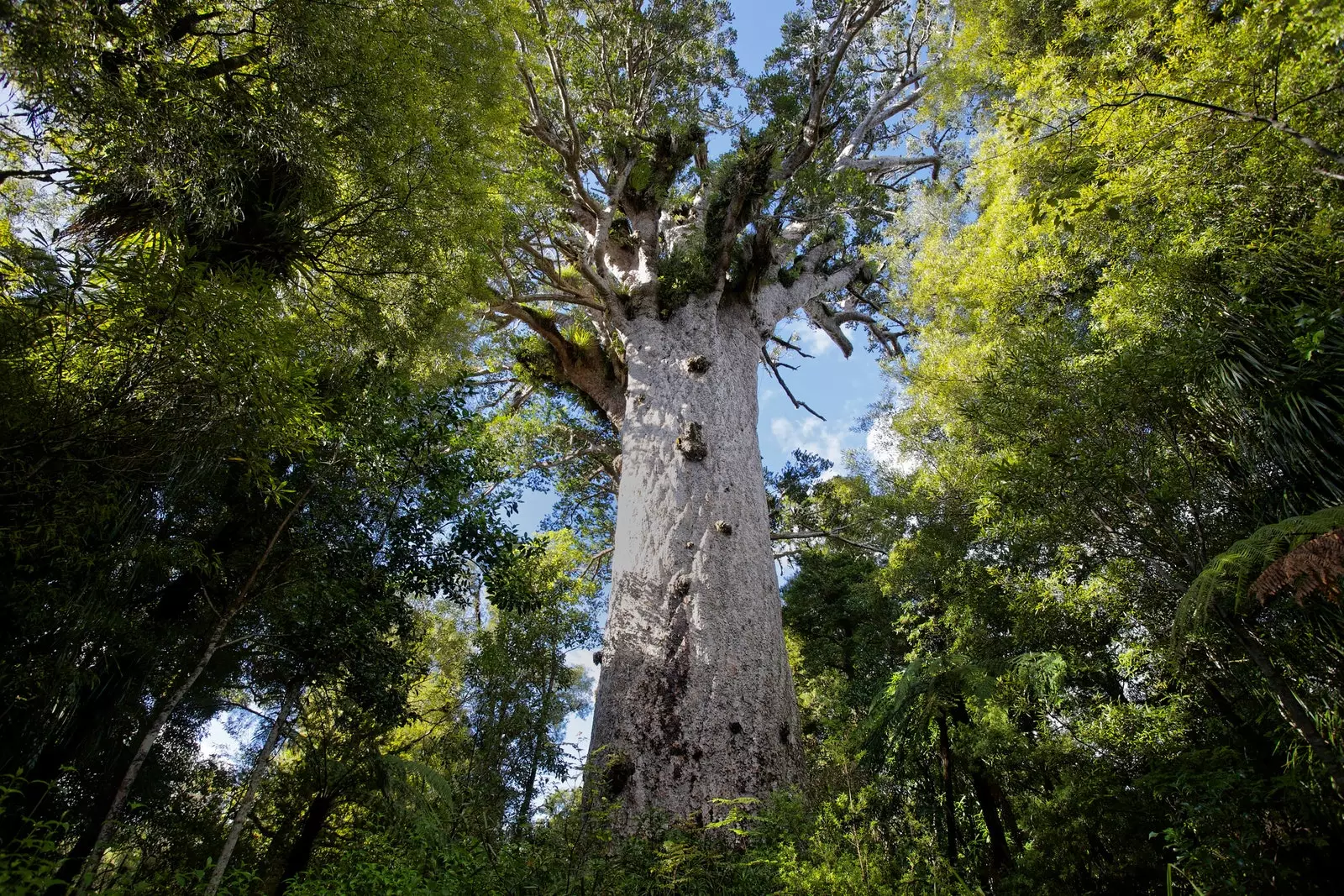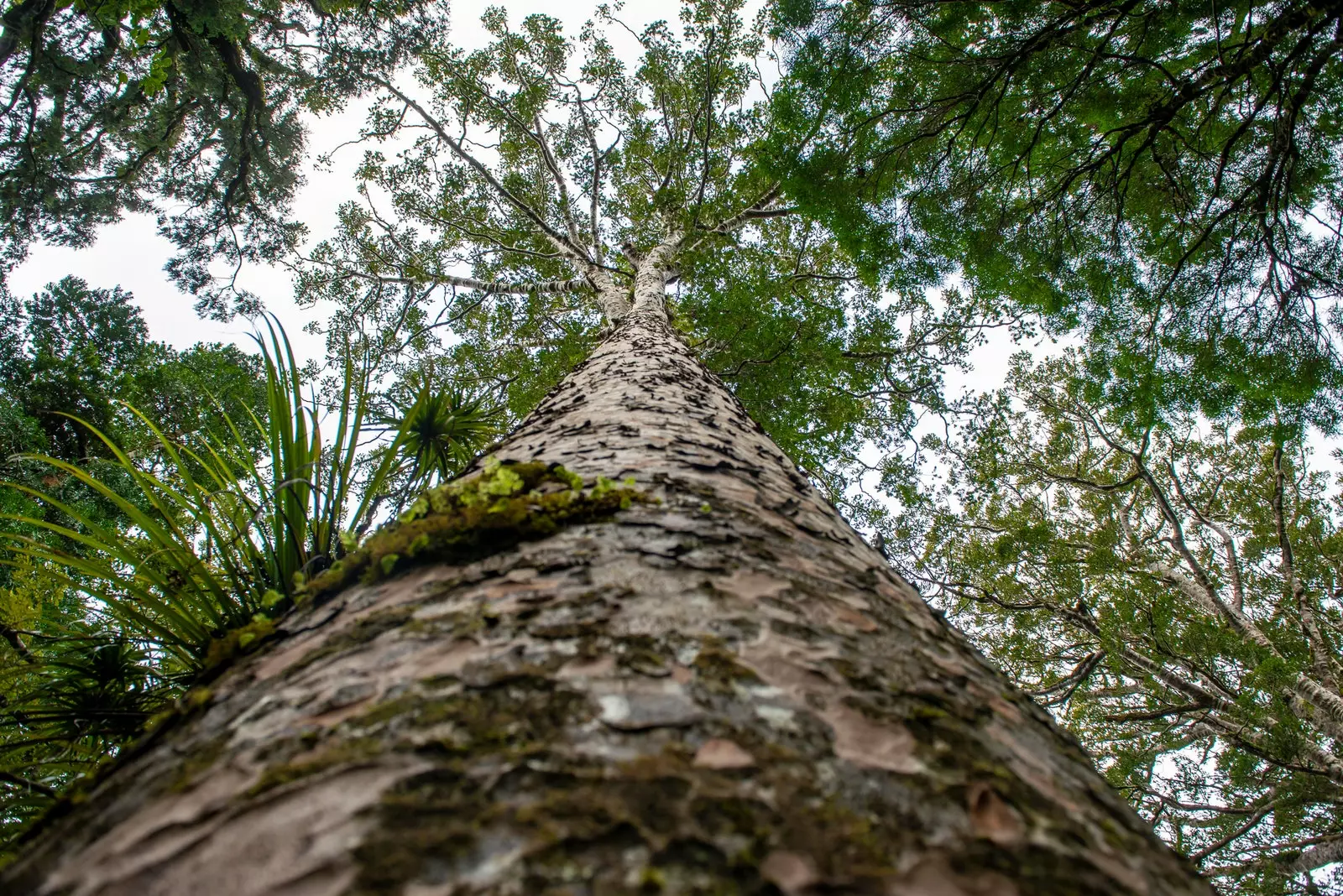
Tane Mahuta, the king of the forest in New Zealand.
For the Maori tribes that inhabit New Zealand kauris are sacred trees . Before the arrival of European settlers, who began to cut them down indiscriminately for the manufacture of boats and rubber, these gigantic trees of more than 2,000 years covered 1.2 million hectares between the northern tip of Northland and the southern tip, in Kawhia.
It was in the last century that they were protected: in 1952 the Waipoua forest, with 9,105 hectares, was declared a national sanctuary, and the rest of the forests were protected from 1987.
Specifically** Waipoua** is home to Tane Mahuta , the king of the forest and the largest kauri tree in the country. It is over 1,500 years old , measures 51.5 m high and has a diameter of 13.77 m. For the Maori, this tree is and has been for centuries the guardian of all the creatures of the forest, which is why it is so important to preserve it. In this same forest is the second largest kauri tree in New Zealand, Te Matua Ngahere with 29.9m height.

Kauris are sacred trees to the indigenous Maori people.
What is happening in New Zealand with the Kauri? Why is it no longer possible to walk through some of its best-known forests? The culprit lies with a fungus called Phytophthora agathidicida (PA) that spreads a deadly disease for kauris.
It is a microscopic organism that lives in the soil. and that infects the roots of ancient trees, damaging the tissues that transport the nutrients they feed on, without them the tree literally starving.
For now, there is no cure , so if a tree gets infected it dies. This is quite shocking because the kauris full of life become white ghosts in the forest. **The worst thing is that a tree may have been infected but not show symptoms for up to 10 years. **
The disease has considerably affected the northern area, in Waipoua Forest, where Tane Mahuta is located . It is believed that the king of the forest could already be infected, but since the symptoms are not immediately noticeable, it will take years to see it.
The big problem is how it spreads, ** official sources warn that it is through dirty shoes, animals or vehicles, for that reason the access roads and the entrance to some roads and paths have been cut off. ** And here is the problem, misinformation has led many visitors, most of them local, believing that the forest is public, to set foot in all the areas despite being closed.
So information campaigns have been launched in schools, forest surveillance and more support on social networks to publicize the problem.
For the next four years More than 20 million have been allocated to the investigation of the regressive death of Kauri . From Bioprotection science for New Zealand, research is being carried out in different universities to control the plague and prevent it from spreading in healthy areas.
For now, the closure of some parks is the most feasible option and fines of up to 54 thousand euros for those who break the rules . They have also created wooden paths over the kauris so that there is no direct contact with them.
If you are traveling in New Zealand here you can see the open and closed parks of the last weeks.
Here are some of the tips he suggests Keep Kauri Standing , the organization created to safeguard these sacred trees.
1.Clean the dirt from the shoes before and after entering the forest . The disease (which is only spread between trees) is spread by tiny particles and very quickly.
**2.Use disinfectant after all dirt has been removed. **
3.Stay on the road and always out of the roots of the kauri. Keep in mind that the roots can grow out up to three times as far as its branches.
4.Share this information. One of the biggest problems with the spread of the disease has been that many people did not know what was happening.
